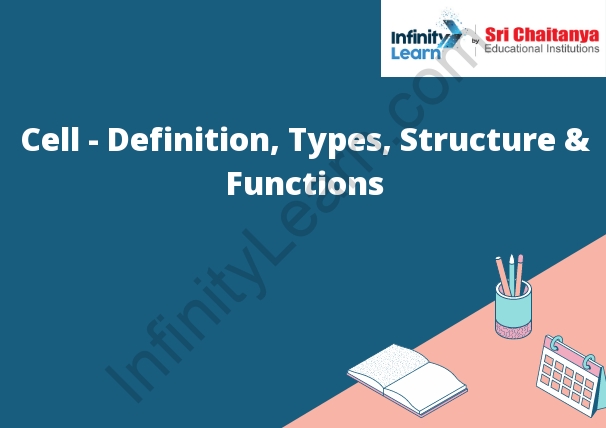Table of Contents
What is a Cell?
Cell – Definition: A cell is the smallest structural and functional unit of an organism. Cells are the basic units of life. They are the smallest unit of an organism that can carry on the essential functions of life.

Types of Cell
There are many different types of cells in the human body. The three main types of cells are muscle cells, nerve cells, and skin cells.
- Muscle cells are the cells that make up the muscles in the body. They are long and thin, and they can contract to make the muscle move.
- Nerve cells are the cells that send messages from the brain to the muscles and other organs in the body. They are long and thin, and they have special extensions called dendrites that help them to send messages.
- Skin cells are the cells that make up the skin. They are flat and thin, and they have a tough outer layer that helps to protect the body.
Cell Structure
The cell is the smallest unit of life. It is the basic structure of all living things. Cells are made up of atoms. The cell has a plasma membrane, cytoplasm, and a nucleus. The plasma membrane is a thin, flexible layer of protein and lipid that surrounds the cell. The cytoplasm is the jelly-like substance inside the cell. The nucleus is the control center of the cell. It contains the cell’s chromosomes.
Cell Theory
Cell theory is the scientific theory that states that all living things are composed of cells and that cells are the basic unit of structure and function in organisms. Cells are self-replicating and are the smallest unit of life that can grow and divide to form new cells. Cells are also the smallest unit of heredity, and all the information necessary to direct the development and function of an organism is encoded within the cells.
Discovery of Cell
The discovery of cells is credited to Robert Hooke. In 1665, Hooke observed thin slices of cork under a microscope and saw that the cork was composed of small, square compartments. He named these compartments “cells” because they reminded him of the small rooms monks lived in.
Characteristics of Cells
- Cells are the smallest structural and functional units of life. They are the basic building blocks of tissues, organs, and organ systems in all living organisms.
- Cells are incredibly diverse and can be found in all parts of the body. They are able to carry out the many complex biochemical processes that sustain life.
- Cells are able to replicate, or produce new cells, through the process of cell division. This allows the body to grow and repair tissue.
- Cells are also able to produce energy through the process of cellular respiration. This energy is used to carry out the many biochemical processes that occur in cells.
Cell Organelles and Their Functions
- Cell organelles are tiny structures within cells that carry out specific functions. The main organelles are the nucleus, the plasma membrane, the cytoplasm, the mitochondria, and the ribosomes.
- The nucleus is the largest organelle in the cell. It contains the cell’s DNA and controls the activities of the cell. The plasma membrane is the thin layer of protein and lipid that surrounds the cell. It controls the movement of substances in and out of the cell. The cytoplasm is the jelly-like substance inside the cell. It contains the organelles and the cell’s DNA. The mitochondria are the organelles that produce energy for the cell. The ribosomes are the organelles that produce proteins.





